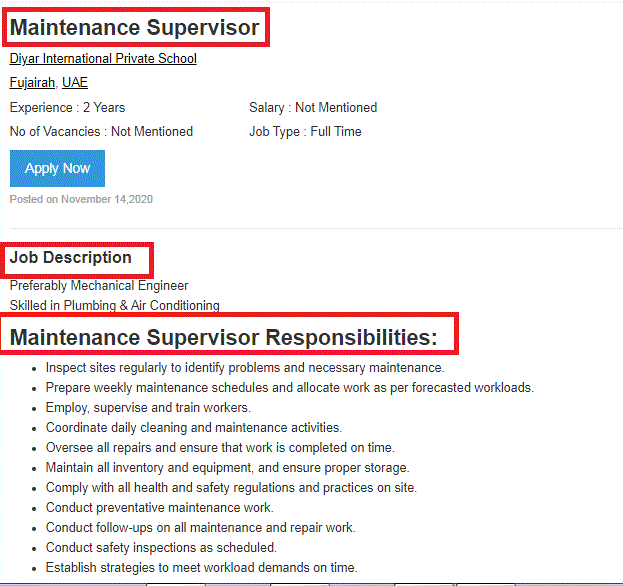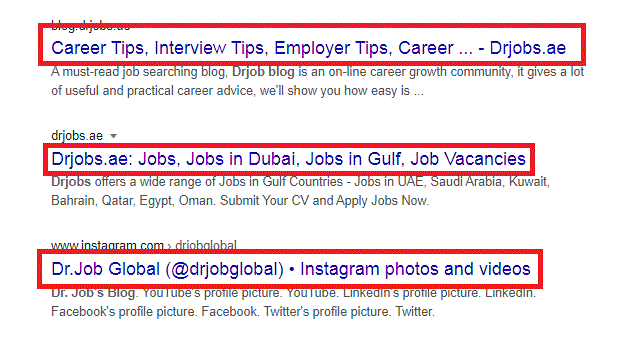Are you a recruiter who receives dozens of applications that don't match your requirements?
Has it ever happened that you didn't receive any single application for an available position?
If yes,
It would then be best to consider SEO tactics to get your job posting ran higher on Google.
What is SEO in Recruiting?
Whether you have worked in the recruiting business for some time or have just begun, you might have used the word Search Engine Optimization (SEO) and how it may help your recruitment process. Many recruiters feel fazed by SEO's thoughts because they begin to be introduced to technical terms such as keyword stuffing, sitemap, and Meta Title (...what?). However, others could have understood how a little content adjustment might have a very positive effect on your job posting ranking.SEO (or Search Engine Optimization) is the technique of ensuring that a web page exists inside the first page in the search result while a person looks for a keyword or search term expression. Major search engines have continuously evolving algorithms that determine the order of their list.
It's more vital now than before for hiring managers to verify that their job postings are customized for SEO, so search results pick them up. As many as 67 percentages of job-seekers start searching for their jobs using a search engine-so what will you do to guarantee that applicants see your job advertisements on the first page?
To be able to rank highly, there are ranking factors that you must follow. Here are the top 14 SEO tactics to get your job posting ranked on Google.
Utilize The Power of Keywords
To increase your high ranking chances and get more relevant applications to build a strong talent pool, you should know how and where to use the right keywords and phrases in your job posting.How can you find these keywords?
You can use Keyword finder tools
Google related search results (you'll find by the end of the first search page)
Suggested results while typing for search
These ways will help you find the main keywords job seekers usually used to search for opportunities.
Avoid "Keyword Stuffing"
Keyword stuffing is using the same keyword too many times in the text.Google and other search engines interpret this text as spam. So, you can overcome this by using alternatives, synonyms, or related phrases. If you're looking for a nurse, you can use words like HAAD registered nurse, Staff Nurse to be more specific and achieve the variation. This will attract more candidates with different backgrounds, which ensures diversity for your talent pool.
If your job is about 500 words, use 5 keywords only, and if it's longer, you can use up to 7-10 keywords.
Stick to Common Job Titles
In a trial to create a catchy job ad, some recruiters use job titles like " A number Ninja" or Chief of Chatting" to get noticed by the online community and demonstrate the company's environment.These are not the keywords that people always use to search for jobs in the digital era and don't clearly convey the job responsibilities. It would be better to use direct, specific, and common words like "Accountant" and "call center manager."
To be more transparent and specific, you can use job titles like "technical content writer" instead of "writer" and "light vehicle driver" instead of using "driver" only.
Try to give as much information as you can through the title, so you can also mention the working hours like "full-time," "Part-time," or "freelancer."
Avoid Walls of Text
The first step to more SEO-friendly job postings is to avoid very long paragraphs and blocks of text. Search engines, including Google, Bing, and Yahoo, think first about users, and you should do that.Make your post ad clear and well-organized to ensure quick high ranking in search results.
Write 3 sentences or less for the job description and 5 sentences or less for the company description.
If you have no chance to shorten the long job postings, organize your content using headings and subheadings.
In the HTML code language, headings and subheadings are referred to as (H). It has a hierarchy from H1 to H6. H1 is our page title (the first title in the text), and subheadings are from (H2) to (H6).
So, if Your first subheading is the "job description," it will be (H2).
Using headings and subheadings makes it easy for search engines to scan and interpret your job posting.
Bulleted lists are also another way to organize your job -posting descriptions and responsibilities.

Utilize Local SEO
Search engines suggest results depending on the user's location, so when you post a job with no specific location, you face two problems: no matched resumes and no ranking on Google. So, if you're hiring in the UAE, write a title like " Full-time receptionist in UAE."In terms of "Keywords," users always search using a specific location.
Mention The Salary
Every business has its reasons behind avoid posting the salary. However, to make your job ad more attractive, you have to mention the salary range. In terms of SEO, it's advantageous.If you don't mention the salary and your competitor does, he will get a high ranking on Google. If you don't know what should be the specific salary, you can use salary calculations.
Craft the perfect SEO Title Tag
The "title tag" is the title of every web page. The one which you see as the headline after clicking "search."Here's an example,

So, in SEO, this title will help rank your page, so you've to insert keywords into your title, location, and more details so that search engine crawlers easily recognize your page's content, and it will be more user-friendly.
Suppose you don't specify a title tag. The first title you use in the job ad will be your title tag, and it will also appear in the URL of the page.
Introduce The Company
Giving a brief about your company is vital to help applicants understand more about the culture and the values of the place they are applying for. If the company background doesn't meet their goals, they will not use, which will save your time and effort in checking not matched resumes."Keywords" play a role here also. You can use specific industry keywords like "facilities management," "retail," "social services," or other exact words that describe the company's function.
Build optimized Career Page
Almost every company's website has a "career" page where it updates all its available vacancies. To utilize this page for the company's benefit, every job posting should have its individual page under the career web section.This page should be optimized with relevant keywords, title tags, and job descriptions.
Applicants will browse this page directly from Google, which will produce more traffic to the website, ensuring a higher ranking.
You can also add "social sharing" buttons, which ensure more job ad sharing.
Link to other pages
Linking to other pages will help you build your website authority and boost your job ad by google as it interprets it as content that adds value to users.To increase your credibility and value, link to other pages on your website like "about us" "our services." This will also help the candidate to know more about the company.
You can like the "Career" page itself on other pages on the website and feature it on the header or footer to streamline the job search and apply process and the search engine ranking process.
Tailor your job ad to Google for Jobs
With the appearance of Google for Jobs that suggests job listings according to the job seeker's typing in the search box. Recruiters have to optimize their job descriptions to be easily scanned and interpreted by Google and job websites.Stick to Google guidelines related to "Structured Data" in your job ad and career section on the company website to ensure higher rankings.
Create Graphical User Interface
Add photos and video in your job ad. This will create a compelling text which Google is searching for. For example, you can record a video explaining more about the job posting and attaching it to the job ad. User experience is a priority for search engine ranking.With an effective SEO strategy, you'll get more applications that match your requirements.
Don't Forget Mobile View
The substantial growth in cell phone usage has become a norm nowadays, and the trend is likely to last for the coming future. There is considerable growth in the availability and use of smartphones and other wireless technologies, allowing people to access data virtually at any time. This has many consequences for the hiring process, as mobile devices play a growing part in the typical career hunt.To guarantee that your job advertisement is ranked on Google #1 on smartphone searches, you first have to index your mobile version, so you should send it to Google Webmaster Software. Then, ensure that your job ad landing page is designed for mobile devices.
Share Your Job Ad
Make your job posting popular by sharing it on all social media platforms. This will generate real-time traffic on your website, which Google will consider as an added value to your website's authority since you add value to the user interested in your postings. This also shows that you make the best use of "keywords."To conclude, Recruiters have to consider SEO strategies while listing their job ads to avoid the recruitment strategy's adverse effects when receiving fewer applications and arranging fewer interviews. Consequently, they will face a challenging hiring process. So, recruiters should master the art of using keywords, optimizing tag titles, and don't miss the advantages of link building and sharing the job postings.
For a dream career, click here.








 2023-03-22
2023-03-22
 2022-10-11
2022-10-11
 2022-09-25
2022-09-25
 2022-09-14
2022-09-14
 2022-09-11
2022-09-11